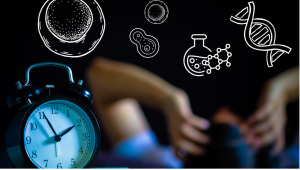 The first Science Huddle panel discussion of 2023, Cell & Gene Therapy: Maximizing Commercialization, delved into challenges keeping leaders in the cell and gene therapy (CGT) commercialization space up at night.
The first Science Huddle panel discussion of 2023, Cell & Gene Therapy: Maximizing Commercialization, delved into challenges keeping leaders in the cell and gene therapy (CGT) commercialization space up at night.
Moderating the event was Dr. Christian K. Schneider, Head of Biopharma Excellence, who has held leadership roles with both Danish and UK regulatory agencies, making him well suited to guide a discussion about some of the CGT industry’s biggest commercialization challenges.
Three panelists joined the event: Keith Thompson, CBE, Chairman of NK:IO, and advisor to Deep Science Ventures; Michael May, President and CEO of CCRM; and Sven Kili, CEO at Antion Biosciences and CCRM board member.
It wasn’t long before the issue of access to capital came up, and all three panelists were united in agreement that this is the number one challenge that has been inhibiting their sleep in recent months. “We work at the front end of the development cycle with start-up companies and there’s always been a challenge catalyzing investment at that stage,” explained Dr. May. “There are so many uncertainties, so many elements of a proposal that need to be de-risked, that access to capital has always been an issue. But now we’re seeing that although there’s a lot of capital in the system, a number of companies are going bankrupt or looking for mergers or acquisitions, and a number of technology developments will be halted.”
Having been through several “biotech winters,” Keith Thompson agreed that we’re currently in one, though he was keen to remind the audience that they do eventually come to an end. He pointed out that when he launched the UK accelerator Cell and Gene Therapy Catapult back in 2012, it was also a poor investment environment; however, that thawing of 2012’s winter was triggered by “new and outstanding clinical results with new technologies and new indications.” He noted that although many investors are focused on their existing portfolios right now, another wave of positive results would likely unlock the “investment freezer.”
Dr. May also highlighted challenges around workforce talent, particularly now that manufacturing is understood to be the gatekeeper for success in CGT. The need for robust scalable manufacturing and a workforce of GMP-trained operators able to handle products going into the clinic is front of mind for many leaders in the industry, though Dr. May points out that these issues can be addressed when companies have access to capital. Many of the industry’s challenges right now lead us back to this root issue.
Keith Thompson shared predictions for how the development of new therapies is likely to play out, with new ones starting in areas of low prevalence and high unmet need, and that gene therapies like CAR Ts will only migrate to higher prevalence indications once they are proven to be safe, durable and cost-effective. He stated that therapies will continue to command high prices before this migration takes place. He also foresees cells from the innate immune system, such as NK cells, playing a big role in “cracking the solid tumour nut,” though these therapies will also start in high unmet-need clinical populations that are relatively small before moving to larger patient populations.
Talk of patient populations led the conversation to the “allogeneic vs autologous” discourse, which the panelists unanimously agree is unhelpful framing, noting that both approaches have a place in the future of regenerative medicine. Dr. May highlighted the importance of autologous treatments in the rare disease and lower-prevalence-indications space, and that the “versus” framing evokes another debate where there is no one right answer: point of care manufacturing versus centralized manufacturing.
Dr. Kili, building on Dr. May’s point, highlighted one unfortunate yet prevalent mindset in industry, whereby people identify one approach, such as allogeneic, as belonging to the future, while condemning another to the past. “There is definitely a place for autologous cell therapies. We need to get away from this ‘Oh, I have a hammer, and everything looks like a nail.’ We’re building a toolbox and instead of just a hammer, we now have a screwdriver and we have a drill, and very soon we will have a few more tools and we need to learn how to use them effectively and efficiently, and only once we start doing that will we be able to create value for payers and society.”
Keith Thompson added that though allogeneic might suit everyone’s investment models, autologous therapies work because they cooperate with the human immune system rather than trying to fool it.
Catch up on the full event recording, made available courtesy of Biopharma Excellence, here.
Cal Strode
Latest posts by Cal Strode (see all)
- World AIDS Day: Update on HIV cure research and gene therapies - December 1, 2025
- Headwinds and tailwinds for cell and gene therapy under the second Trump administration - March 11, 2025
- From innovation to international impact: ARM’s 2025 “State of the Industry Briefing” showcases maturing CGT industry - January 20, 2025






Comments